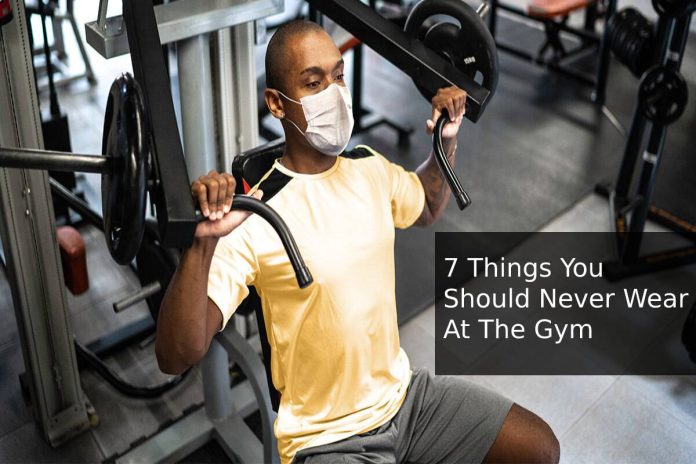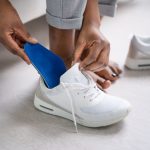Do you know the saying ‘dress for success? Well, it doesn’t just apply to your professional life. What you decide to wear when you go to the gym determines your performance one hundred percent. That is, that sports bra that you have ten years ago, that cotton t-shirt that instead of giving away you designated for the gym, or those worn tennis shoes, actually make your training more complex and can even wreak havoc on your body and skin. (Hello, sore thighs!) . These are the seven things you should eliminate from your workout looks immediately.
1. 100% Cotton Garments
Cotton indeed helps keep odor at bay, a very desirable benefit when it comes to exercise clothing. But unlike “synthetic” clothing, cotton can absorb every drop of sweat. The wetter the dress, the more likely bacteria are to grow. And if the skin exposed to a garment full of bacteria, it can lead to infections or fungus. So forget about cotton garments and opt for fabrics specially developed for exercise.
2. Clothing too Tight
Compression clothing, which designed to allow movement while compressing the muscles, is fine. But clothing that is one size too tight can do more harm than good. If the pants do not allow you to bend the knee to a full squat or the shirt does not allow you to raise your arms above your head, it is clear, it is too tight and it will not work. In addition, clothing should not be so tight that it restricts circulation, otherwise it may result in cramps or make breathing difficult. And if you wonder why your skin is irritated, it may be from the chafing when wearing very tight clothing.
3. Super Loose Clothing
The last thing you want to do in the gym hide your body from your coach or instructor because he needs to be able to evaluate each movement you do: if the spine is elongated, how to do the abdominals, if you are working the muscle too much Wrong … Plus today’s exercise clothes are designed to help the body move in a better way, so finding clothes that really fit and feel good is a bonus.
4. Worn Shoes
The common rule of thumb dictates that you must wear your sports shoes for a maximum of four hundred eighty kilometers before replacing them. But unless you’re an athlete tracking your mileage, it can be difficult to determine. So another option is to check the sole – when the lower design is worn or erased, it’s time to change them. Needless to say, if you notice any other signs of wear, don’t ignore it and go for new ones. What is the problem with continuing to wear old tennis shoes? You will exposed to less cushioning, shock absorption, and slippage of the knees and hips.
5. Old or stretched sports bras
For the love of your body, don’t wear a bra at the gym! Sports bras are a key garment for the gym. But batteries, that does not mean that any will work or that you can buy one and use it for a thousand years. Of course, if it is not strong enough, if the rubbers are old and worn, or completely stretched, they are not of much use either. Exercise can lead to upper back and shoulder pain if you don’t use it, not to mention that it can cause breast tissue to stretch, become damaged, and increase the chances of it falling out in the future. It is a must!
6. Accessories
It is best to leave them at home to avoid taking risks in the gym lockers, but accessories are definitely a resounding NO in the gym. It avoids the knocking of a necklace, or even worse than it gets tangled in one of the machines, and save yourself the injury from lifting weights with rings on. And if you don’t do it for yourself, do it for your jewels, that no matter how much gold they are, the constant collision with machines or weights can ruin them.
7. Makeup
Although it is a constant debate, for most experts makeup has no place inside a gym because when you sweat, dirt and oil can accumulate under the makeup, causing irritation and promoting breakouts and pimples. And so a vicious cycle begins, in which you use more makeup to cover up blemishes caused by wearing makeup. (Ugh) . So think about it: if you go to the gym to exercise, prepare for just that.
Also Read: GET FIT AND SPEND LESS: LESS EXPENSIVE WAYS TO GET FIT


















